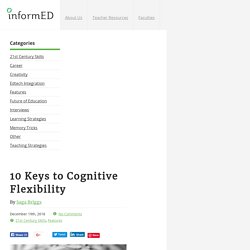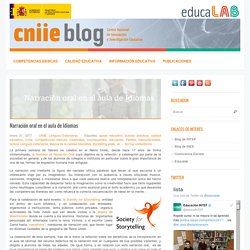

10 Keys To Cognitive Flexibility. How do we become more efficient at harnessing our experience, knowledge, and imagination to respond most effectively to the situation at hand?

Originally coined by psychologists in the 1960s, cognitive flexibility has emerged from the literature and been rebranded as a popular concept in edpsych circles. It is traditionally defined in terms of how well an individual can adopt another perspective, change one’s thinking, or mentally adapt to one’s environment. Common strategies for enhancing cognitive flexibility resemble strategies for boosting divergent thinking, creativity, and openness. While this definition, and these strategies, tend to frame “flexible” thought as a departure from one’s normal way of thinking, a more comprehensive definition might account for the efficiency of that normal way of thinking as well: how flexibly can we engage various parts of our brain to respond to a task, whether or not the task requires us to think “differently”?
Memory Confirmation Bias Salience Myopia. L1 in the L2 classroom: from a sin to a possibility. As most people trained in the mid-80´s, I used to completely avoid using or referring to L1 in the L2 classroom.

After all, as Scott Thornbury (2010) reminds us, the arguments against it are that: translation encourages a dependence on the L1, at the expense of the learner constructing an independent L2 system; translation encourages the notion of equivalence between languages, yet no two languages are exactly alike (although languages from the same language family may be similar in lots of respects);the L1 system interferes with the development of the L2 system;translation is the “easy” approach to conveying meaning, and is therefore less memorable than approaches that require more mental effort, such as working out meaning from context;the “natural” way of acquiring a language is through direct experience and exposure, not through translation.
Even so, my understanding of the debate about the role of L1 in the L2 classroom was still very pragmatic and “apolitical”. And you? References. Cult of Pedagogy. Oxford Professional Development. John Spencer – The Creative Classroom. Home. Narración oral en el aula de Idiomas. La primera semana de febrero se celebra en el Reino Unido, desde hace 17 años de forma ininterrumpida, la Semana de Narración Oral cuyo objetivo es la reflexión y celebración por parte de la sociedad en general, y de los alumnos de colegios e institutos en particular sobre la gran importancia de una de las formas de expresión humana más antiguas.

La narración oral mediante la figura del narrador utiliza palabras que llevan al que escucha a un interesante viaje por su imaginación. Su interacción con la audiencia a veces utilizando música, canciones, imágenes o marionetas lleva a que cada persona realice una interpretación única del hecho narrado. Esta capacidad de despertar tanto la imaginación como la creatividad hace que tanto logopedas como neurólogos consideren a la narración oral como esencial para el éxito académico ya que desarrolla las competencias literarias así como refuerza la correcta secuenciación de ideas en la mente. ELF Pronunciation. If you’re looking for audio resources featuring a wider variety of accents than is offered in most coursebooks, then YouTube is the place to go.

This is the last in our series of five free downloadable lesson plans and worksheets based on YouTube clips, aimed at inspiring teachers to expose students to the full range of English accents in the world. The four previous posts have all featured individual lesson plans for teachers to take into class. I would like to complete the series with something a bit different, by sharing details of my new ‘online school’ based almost entirely on… YouTube. There are so many interesting videos on YouTube featuring speakers from around the world that I decided it is time to create a YouTube channel of my own, to put these videos in one place. The lessons are aimed at learners, i.e. they are self-study materials for people to do at home, alone. Like this: Like Loading... Teacher Tech Trials. Reflections of a Teacher and Learner.
20 Ways To Be A Better English Language Teacher (Part 1) English language teaching can be a challenging and difficult process, especially if you are seeking for new ideas and thoughts on improving your day-to-day teaching.

Much of the challenge is learning to develop yourself, especially once you have found your place in this career and feel settled. You must continuously strive to improve your own teaching day in and day out. Eltchat. The aim was to create a freely available social network for ELT professionals offering mutual support and opportunities for Continuous Professional Development.

Now, every Wednesday at 19:00pm GMT or 21.00pm GMT, ELT teachers from all over the world log into their Twitter account and for one hour hold an online discussion on a topic they have selected. To join in you just have to follow the hashtag #ELTChat. You'll see the conversation and anything you tag with #ELTChat will be part of it If you already use a Twitter app like Hootsuite or Tweetdeck, you can follow #ELTChat in there.